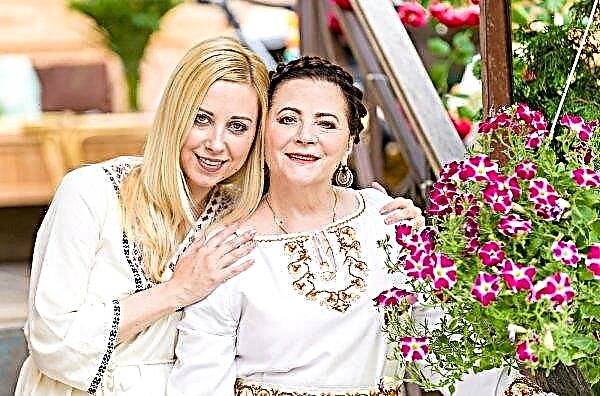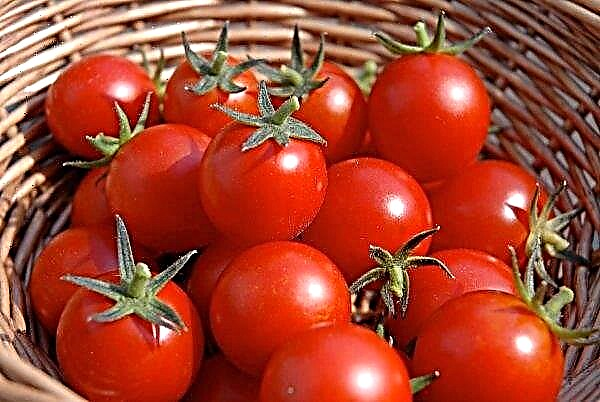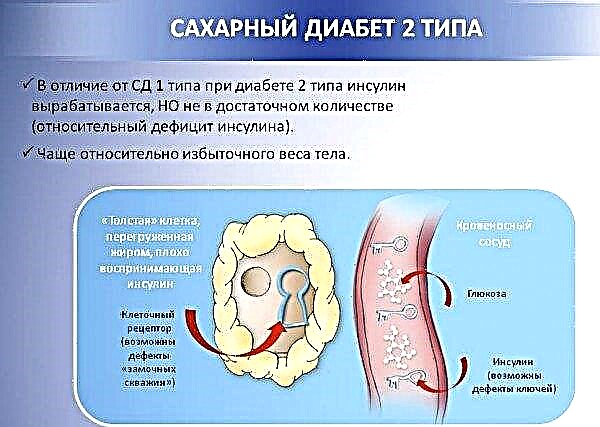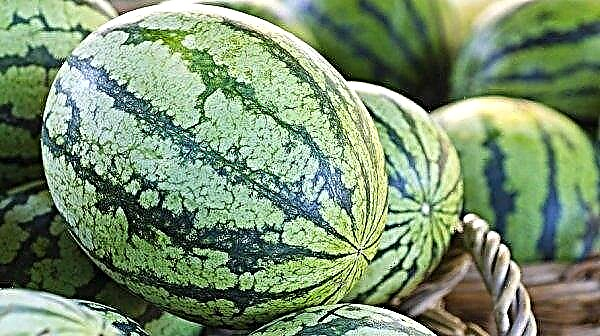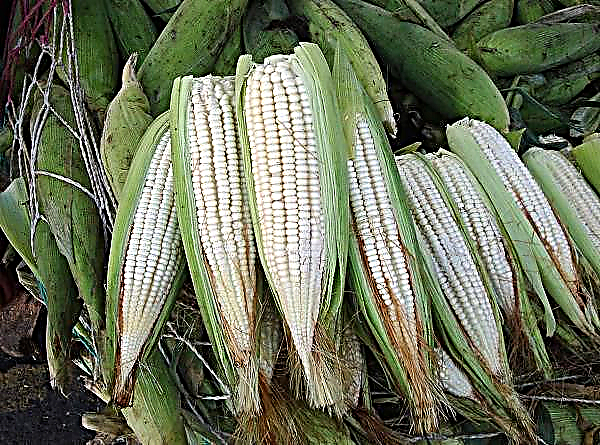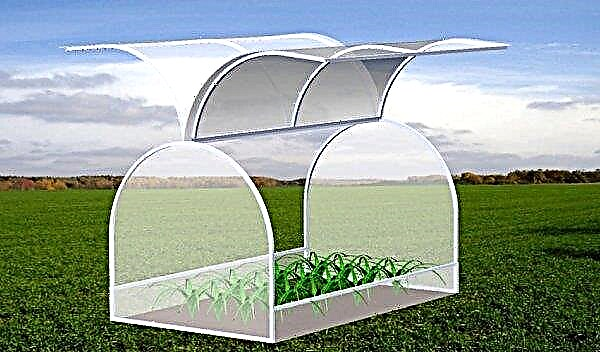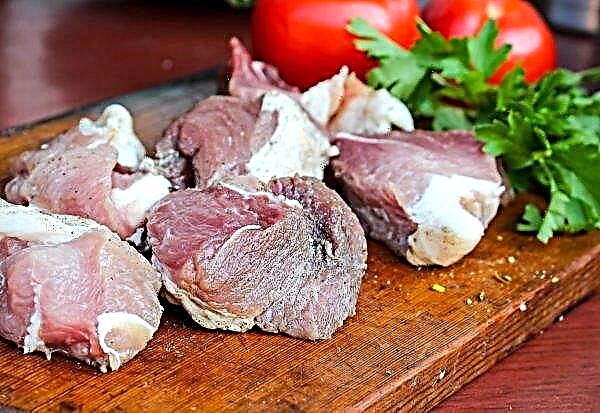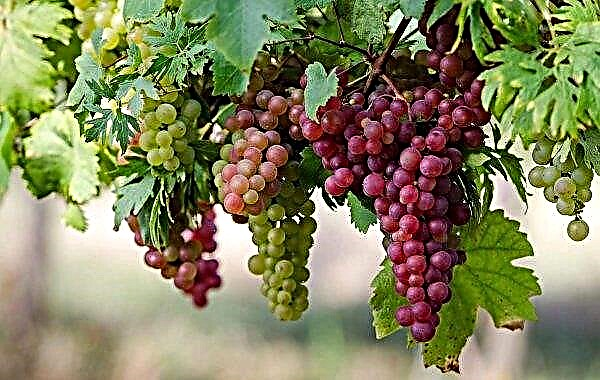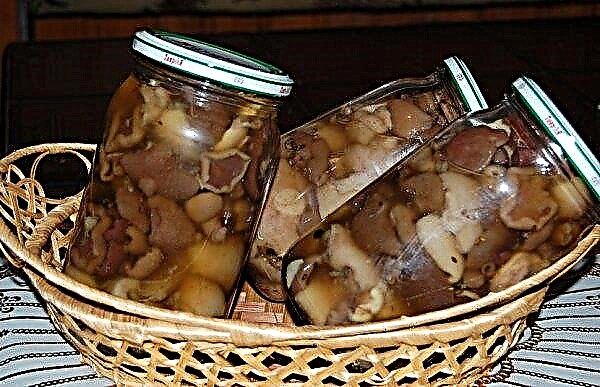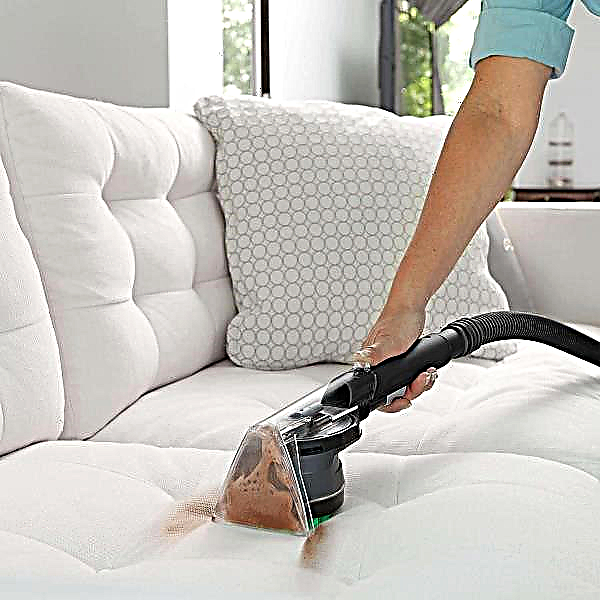Tomato "Stolypin" can be grown both in the greenhouse and in the garden, which makes it a versatile vegetable. Undoubtedly, along with other tomatoes, this variety has both advantages and disadvantages, but they can be determined only by studying its features better.
Grade description
Representatives of the Stolypin cultivar belong to early ripe tomatoes, since only 85–100 days elapse from the time of their planting to the achievement of technical maturity (seedlings are usually planted in open soil for 55 days after sowing seeds). At least 8–9 kg of delicious oval tomatoes, which, by the way, are very resistant to late blight, are harvested from 1 m² of territory.

External characteristics of the bush:
- bush of determinant type, not a standard bush;
- stem height - 50-60 cm, grows to the formation of several fruit-bearing brushes;
- leaves - medium size, dark green;
- inflorescences are simple, the joints are located on the stalks;
- the fruits are oval, each weighing 90–120 g (in the unripe state, their color is light green, and fully ripened tomatoes are orange-red or bright red).
Did you know? Wild tomato fruits weigh only a few grams, while cultivated plants produce fairly heavy fruit crops: the largest officially recorded tomato weighed 3.8 kg and was grown in Minnesota (USA) in 2014.
Advantages and disadvantages
Choosing the most suitable option for yourself, it is worth exploring in advance all the pros and cons of growing it in a particular area.
- In the case of Stolypin tomatoes, the following positive aspects will be valid for medium climatic or even cold zones:
- high productivity, even in rainy times;
- high resistance to late blight and cracking of the fruit;
- excellent taste, and not only in fresh, but also in canned form;
- early ripening.
- The disadvantages are noticeably less:
- the need for formative pruning and tying bushes;
- the possibility of damage by vertex rot during prolonged rains.
Self-growing seedlings
Sowing seeds and further work with seedlings "Stolypin" are not much different from growing tomatoes of other varieties. However, some features still exist, so let's look at all the nuances of cultivation in more detail.
Optimum timing for sowing
Sowing tomato seeds of this variety is carried out approximately 55-60 days before the expected date of planting in the soil, that is, in the middle or end of March. The first shoots of young tomatoes will appear 5-7 days after sowing, but this largely depends on the quality of the seeds and their preliminary germination.

The soil
The abundance of the Stolypin tomato crop largely depends on the nutrient content of the soil, so even at the stage of sowing seeds, it is worth taking care of the presence of all the necessary components in the soil mixture. A good solution would be a mixture of river sand, peat and wood ash mixed in a ratio of 1: 1: 1. It is useful to shed the finished substrate with a weak solution of potassium permanganate or calcine in the oven, and moisten well before directly sowing the seeds.
Capacity for growing
Traditional seedling boxes (wooden or plastic), individual plastic cups or popular peat tablets are suitable for the capacity of seedlings. The choice here depends more on the location of the seedlings and the convenience of caring for them. Often, gardeners sow seedlings in long boxes mounted on the windowsill, which helps to solve the problem with lighting. For homemade stands you can use separate pots - the main thing is that they are well fixed on it.
Important! Placing seedlings away from natural sources lighting, it is worth preplotting a place for installing fluorescent lamps.
Seed preparation
To obtain an abundant and tasty harvest of Stolypin tomatoes, it is worth additionally keeping the seeds for 10-15 minutes in a weak solution of potassium permanganate, or for several hours in a growth stimulator. In the first case, at the end of the procedure, you need to rinse the seed well and dry it slightly before being placed in the ground, and in the second case, wet planting material is also suitable for sowing.
Sowing seeds
It is better to plant Stolypin tomato seeds in prepared moistened soil according to the following scheme: 2 cm between adjacent grains and 3 cm between grooves. The embedment depth is 2-3 cm. From above, the box with plantings is covered with a film, which will accelerate the time of “pecking” of seedlings.
As soon as the first sprouts appear, the film cover is removed, and the plants themselves dive in containers with a volume of at least 0.5 l.
Seedling Care
For the successful growth of seeded tomatoes, in the first five days the box with seedlings is left in a warm (not lower than 23 ° C) and slightly dimmed place, regularly watering the plantings with warm water (the soil should always remain slightly moist). In the future, the temperature can be reduced to 20–18 ° C, and the amount of sunlight, on the contrary, is slightly increased.

Top dressing of young plants is performed 2-3 times during the "home cultivation", using mineral compounds for fertilizing. At the end of the first week, it is advisable to put seedlings more often in a sunny place, daily turning the box with the other side to the sun. This will help strengthen the root system, and the seedlings themselves will look more “stocky”.
Seedling hardening
The first contact of tomatoes with open air should take place no earlier than 2-3 weeks before the alleged planting of seedlings at a constant place of growth. In the first week of hardening, boxes with plants are taken out to the balcony for only a few hours, gradually increasing the duration of the “walk” to 5-6 hours. A few days before transplanting to the garden, young tomatoes can be left on the balcony until late in the evening, taking into the room only for the night.
Planting seedlings in a permanent place
Young seedlings are transplanted to a permanent place of growth, that is, into open soil, immediately after the end of the last frost. If the danger of cooling has not yet passed, the plantation should be covered with a film.
The age of seedlings during transplanting is 55-60 days, which means that each bush already occupies decently places in the territory. The ideal planting scheme for Stolypin tomatoes is 70 × 30 × 40 cm, but you can change it a little; the main thing is that there should be no more than 5 plants per 1 m² of territory. With a large thickening of plantings, not all plants will be able to grow and develop normally, some specimens will not have enough sunlight, due to which the fruits will lose taste.

The landing process itself does not differ in increased complexity and consists of several sequential actions:
- In selected places, you need to make recesses and fill them with a small amount of fertilized soil.
- A seedling is placed in the center of the hole and, carefully leveling its roots, sprinkled with the remaining soil mixture.
- At a distance of 5-10 cm from the trunk, the earth is slightly tamped, and then watered abundantly with water.
Important! In the first few days, immature seedlings are better harbor at night with a film.
Features of outdoor cultivation
Caring for seedlings of Stolypin tomatoes in open soil is the second stage on the way to obtaining the coveted harvest. By and large, there is nothing complicated in it, and the gardener is only required to water, fertilize and tie up bushes of young tomatoes in a timely manner.
Watering
A sufficient amount of moisture is very important for the fruit to set, because if it is lacking, the tomatoes may not form at all. Bushes are watered only with warm water under the bush, with a frequency of 1 time in 2 days. On especially hot days, you can increase the frequency of irrigation to daily soil moisture. Automate irrigation systems will help ease the task.

Top dressing
As a fertilizer for the described tomato variety, both organic and mineral compounds can act, the main thing is to alternate them with each other. For example, phosphorus-potassium fertilizers can be applied to the soil after the beginning of flowering of bushes, with a frequency of once every two weeks, and it would be nice to spill the soil with organic mixtures once every three weeks.
Important! Do not get too carried away with organic matter, especially if the tops of tomatoes and without it have gone too far.
Stepson
Typically, tomato herding should be performed a few weeks after transplanting seedlings to a constant place of growth. This simple procedure involves the removal of unnecessary lateral shoots in order to improve the quality of the formed fruit, so in most cases it is considered a mandatory event when caring for tomatoes.

When cultivating the Stolypin variety, this event is not so relevant and often ignored, since the growth of stepchildren appearing in the axils is limited and they do not consume plant energy. However, in order not to miss the extra shoots, it is better to inspect the tomatoes from time to time.
Soil care
Soil care for growing Stolypin tomatoes is based on a standard set of works: weeding and loosening the soil shortly after watering, mulching with sawdust to preserve moisture. Hilling the bushes can be carried out a few days after the rain or the next watering, when the earth is already a little dry, but it will still be quite malleable. Weeds are removed according to a well-known pattern: each time the soil is loosened or immediately after it (it is much easier to extract them from the loose substrate).
Bush tying
Tying up tomato bushes is another mandatory procedure when caring for them. Given the height of the variety, it is impossible to exclude stems of the stem part under the weight of the growing fruits, therefore, as soon as you notice that the plant begins to lean sideways - it’s time to drive in pegs and proceed to tying the stem with soft ropes (as an alternative, you can use a metal wire frame ) Typically, the procedure is performed in early or mid-June.

Preventative treatment
The Stolypin variety has excellent immunity to late blight and some other diseases, but this does not mean that preventive measures will be inappropriate here. To prevent the possibility of infection with infectious ailments or the likelihood of an attack by pests, it is advisable to treat it with fungicidal (for example, Quadris or Ridomil) and insecticidal (Actara, Confidor) 1-2 times during the growth of seedlings. You can buy them at any specialized store, and the dosage and breeding rules are always indicated on the package.
Did you know? Tomatoes contain a large amount of serotonin, which is also called the hormone of happiness. Based on this, only a few tomatoes will help to drive off the onset of depression or spleen.
Harvesting
Three months after sowing seeds, Stolypin tomatoes are ready to harvest. When removing fruits from the bushes, one must carefully stack them in baskets or boxes. Under good growing conditions, from 1 m² of territory you can collect at least 8–9 kg of juicy tomatoes that are perfectly separated from the stem.

It cannot be said that planting and growing tomatoes of this variety is more difficult than cultivating the rest, but in order to get a good result of your work, you will have to make some efforts. And the reward for this will be a generous harvest.
Network user reviews
ADVANTAGES: "Meaty", tasty, practically without seeds, does not crack. DISADVANTAGES: No such. Somehow on the market, once again in an active search for seeds for planting on my site, I saw Stolypin tomatoes from Aelita . In the photo, of course, a very beautiful tomato was depicted. You know, this kind of plump, oblong in moderation. But we have long been taught that in the end it grows not quite what the manufacturers promise, and sometimes it doesn’t grow anything at all))) But I really wondered the look of the tomato and I decided to take a couple of packs for testing. Well, I planted it! And have grown! I think that the tomatoes quite justify their so loud name)) True, not very large, but the manufacturer did not promise sky-high sizes. The average weight, personally of my tomatoes, was about 100 grams. Very tight, delicious. Inside there are very few seeds, one pulp. Another thing that I noticed - they do not crack. And this is very good, agree! It’s good and convenient to put them in salting jars. I don’t know - was it my first experience of growing this sotra that was so successful or do they always grow "excellent"? But this year I decided to definitely repeat the experience. I will plant "Stolypin" definitely!

